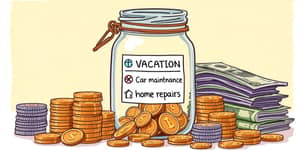Financial minimalism offers more than a budgeting tool; it is a profound shift in how you view money and value. By embracing simplicity, you clear away the noise of consumer culture and regain control of your time, energy, and resources. This article will guide you through the principles, benefits, and practical steps to live a richer life with less financial clutter.
Understanding Financial Minimalism
At its heart, financial minimalism is about aligning your spending with your deepest values. It is not about deprivation but about choosing quality over quantity and experiences over possessions. When you adopt this mindset, you learn to view each dollar as a deliberate choice rather than an automatic purchase.
By focusing on what truly matters, you eliminate needless obligations, shrink your outgoings, and cultivate a healthier relationship with your finances. With fewer distractions, you can channel your resources into passions, relationships, and goals that endure far beyond the momentary thrill of a new gadget.
Why Embrace Financial Minimalism?
Introducing minimalist principles into your financial life unlocks a range of transformative benefits. Consider how these advantages can empower you:
- Spending aligned with your core values: You invest only in items and experiences that truly matter.
- Reduction of financial stress and anxiety: Clearing clutter reduces the mental burden of countless bills and subscriptions.
- Accelerated path to financial independence: Saving and investing more intentionally helps you reach goals sooner.
- Greater environmental responsibility: Consuming less reduces waste and your ecological footprint.
- More time for meaningful pursuits: Owning fewer items means less maintenance and more freedom.
Practical Steps to Get Started
Embarking on the minimalist financial journey begins with a clear picture of your income and expenses. By mapping every flow of money, you reveal opportunities to cut waste and redirect funds toward priorities.
- Create a clear budget that distinguishes fixed obligations from flexible spending.
- Allocate a set percentage for savings and investments each month before spending.
- Prioritize expenses that deliver lasting satisfaction, such as travel, education, or health.
- Build an emergency fund to cover unexpected costs without resorting to credit.
Building Sustainable Habits
Transformation requires action. Small, consistent habits compound into substantial change over time. Focus on these essentials:
- Review and cancel unused subscriptions to reclaim recurring fees.
- Automate bill payments and savings contributions to stay on track.
- Implement spending alerts to maintain awareness of every transaction.
- Practice mindful purchasing by waiting 48 hours before non-essential buys.
- Explore micro-investing tools that round up purchases and invest the difference.
Two Paths to Financial Freedom
Traditional advice often tells us we must earn more and accumulate wealth. Financial minimalism offers a parallel route: needing less to live fully. Both paths can lead to independence, but they differ in approach and timeframe.
Core Personal Finance Principles Simplified
Financial minimalism makes time-tested principles easier to practice. Rather than wrestling with impulse and temptation, you build habits that naturally align with best practices.
Spend less than you earn becomes second nature when every purchase is intentional. You no longer drift into mindless shopping sprees because your spending threshold is clear and purposeful.
Save consistently and automatically by having funds transferred to savings or investment accounts before discretionary money arrives. This removes decision fatigue and ensures progress even when willpower wanes.
Avoid high-interest debt by curbing impulse purchases and using credit sparingly. The fewer obligations you carry, the more financial breathing room you enjoy.
Start investing early when minimalism frees up cash flow. Compound interest is a powerful ally, and the sooner you plant seeds, the greater your harvest over time.
Be mindful of every purchase by pausing and reflecting on whether an item enhances your life. This practice deepens appreciation for what you already own and curtails unnecessary acquisitions.
Focus on long-term value in everything you buy, from durable clothing to meaningful experiences. This mindset shift ensures your resources support genuine happiness rather than fleeting trends.
Embracing Minimalism for Lasting Fulfillment
Financial minimalism is not a rigid formula but a framework for intentional living. As you strip away distractions and unnecessary obligations, you create space to explore passions, nurture relationships, and invest in personal growth.
The true reward lies not simply in a fatter bank account, but in a life designed around what you cherish most. By requiring less, you unlock the freedom to pursue dreams, support causes you believe in, and savor each moment with clarity and purpose.
Begin your journey today by identifying one area of financial clutter to address—perhaps a forgotten subscription or an impulse spending habit. Take that first step, and watch how small changes ripple into profound transformation. Your path to financial minimalism awaits, promising both peace of mind and the liberation to live richly on your own terms.
References
- https://www.becomingminimalist.com/7-personal-finance-principles-made-easier-through-minimalism/
- https://www.sofi.com/learn/content/what-is-financial-minimalism/
- https://www.rocketmoney.com/learn/personal-finance/financial-minimalism
- https://www.youtube.com/watch?v=q62HlzwFG6c
- https://www.youtube.com/watch?v=tj_iMCdko_M
- https://www.becomingminimalist.com/minimalism-benefits/
- https://www.theminimalists.com/finances/
- https://savology.com/financial-minimalism-reach-financial-freedom-by-needing-less










